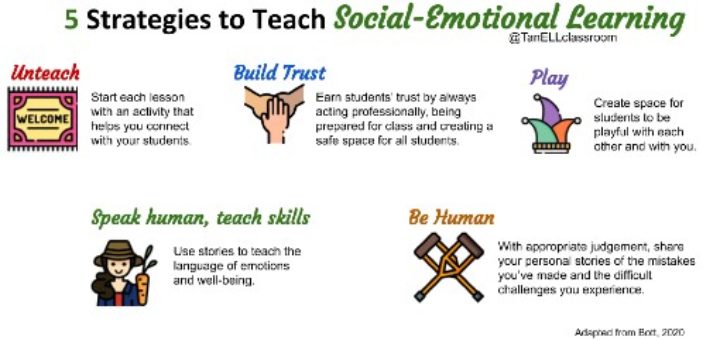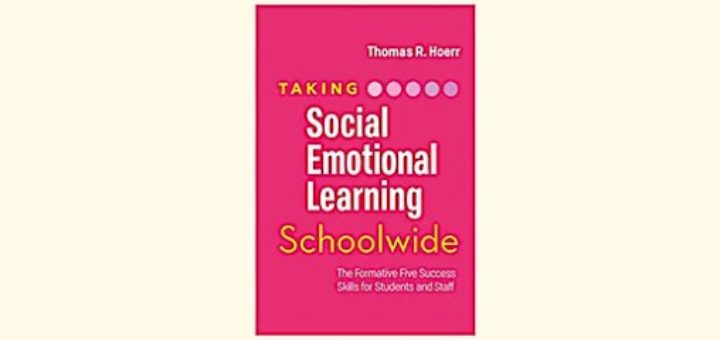Teaching and learning in grades 4-8
Social-emotional learning is not a program we add on; it’s a mindset we teach with. Tan Huynh unpacks five strategies recommended by the Institute for Positive Education that can help teachers cultivate an SEL mindset, whether we’re teaching in physical or virtual spaces.
After weeks of deciphering digital teaching and supporting students in new ways, educators are reflecting on their changed worlds. Principal Rita Platt reached out to collect some of their thoughts on the challenges, the silver linings, and their concerns about public education’s future.
The limitations of funding, square footage, and time can make classroom design a daunting task, writes reviewer Eileen Hornbostel. To meet those challenges, Jessica Martin offers Strategic Classroom Design, a detailed guide to creating effective learning environments.
Thomas R. Hoerr’s guide for taking SEL schoolwide is particularly helpful to administrators, writes pre-service teacher Holly Reynolds. But she expects the book’s big picture view of quality SEL programs to be useful to her as she evaluates teaching opportunities this summer.
The future may be uncertain but the mental health of our students shouldn’t be. Teacher, author and mentor Cathleen Beachboard describes how – through a focus on communication, consistency and control – educators can begin to help young people regain their sense of safety.
As Mary Tarashuk leads her fourth graders into full-time virtual learning, insights gleaned from the writings of Diane Ravitch and Rosita Boland are helping her see how the pandemic’s sudden jarring changes could lead to a rebirth of public education in the years ahead.
When your students read, view, and listen to multiple sources on a topic or issue, do they tackle each source in a silo? Martha Polley and Sunday Cummins share Martha’s dive into helping students think across history sources, synthesizing to deepen their understanding.
Using reading comprehension strategies in the content area helps students build background knowledge and academic skills. Tara Dale and Mandi White, authors of The Science Teacher’s Toolbox, share four techniques they use to help middle schoolers grasp informational text.
Education law expert Robert Kim’s focused discussion of ten Supreme Court cases is written in practical and accessible language and can be a valuable resource to any educator who wants to help students understand justice and equity, writes pre-service teacher Morgan DeVico.
If you are looking for a book that acts as an all-encompassing start to your journey in autism history and education, NeuroTribes by science journalist Steve Silberman is the book for you, writes pre-service teacher Daniel Zarasua, whose younger brother has autism.






































